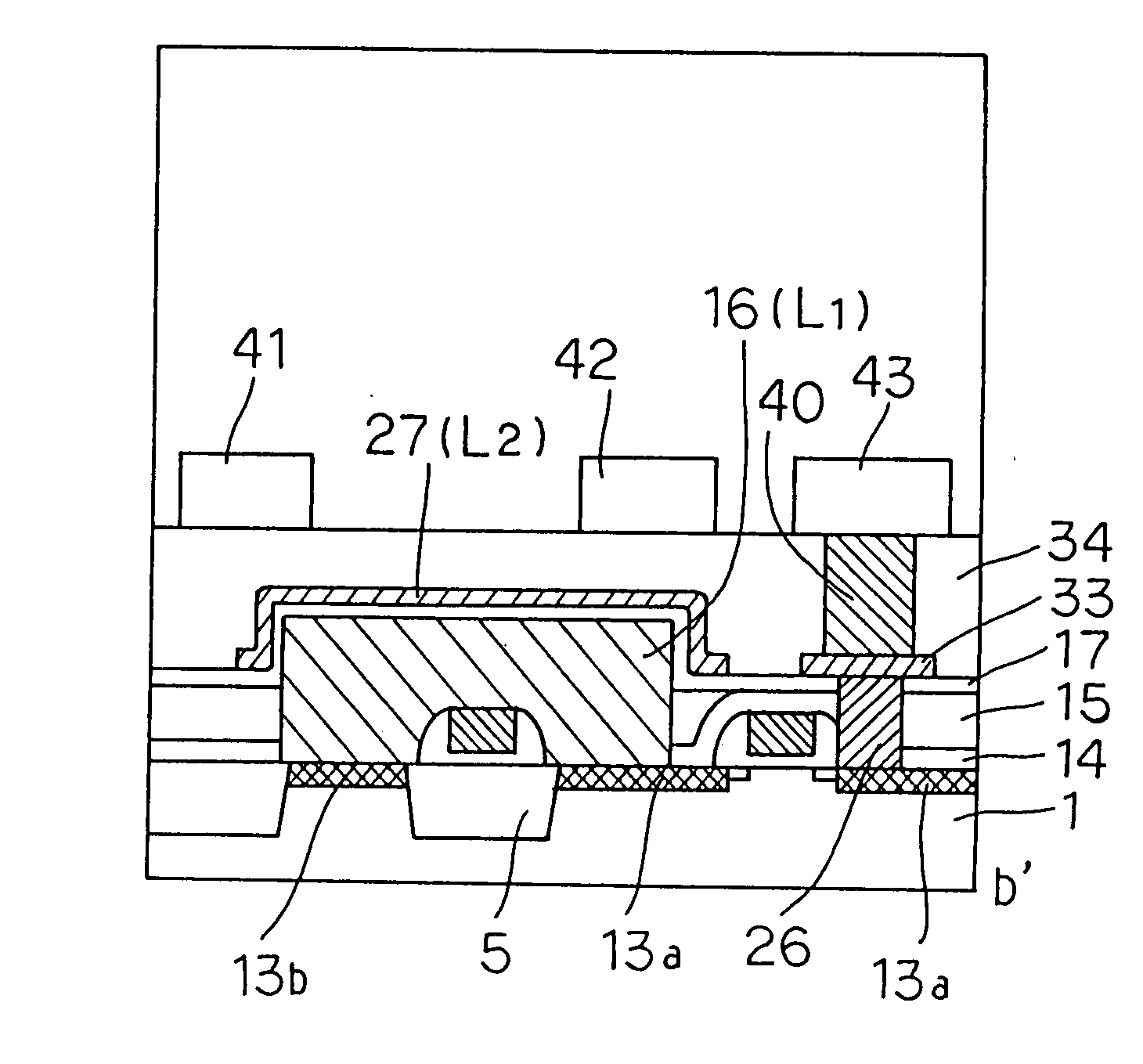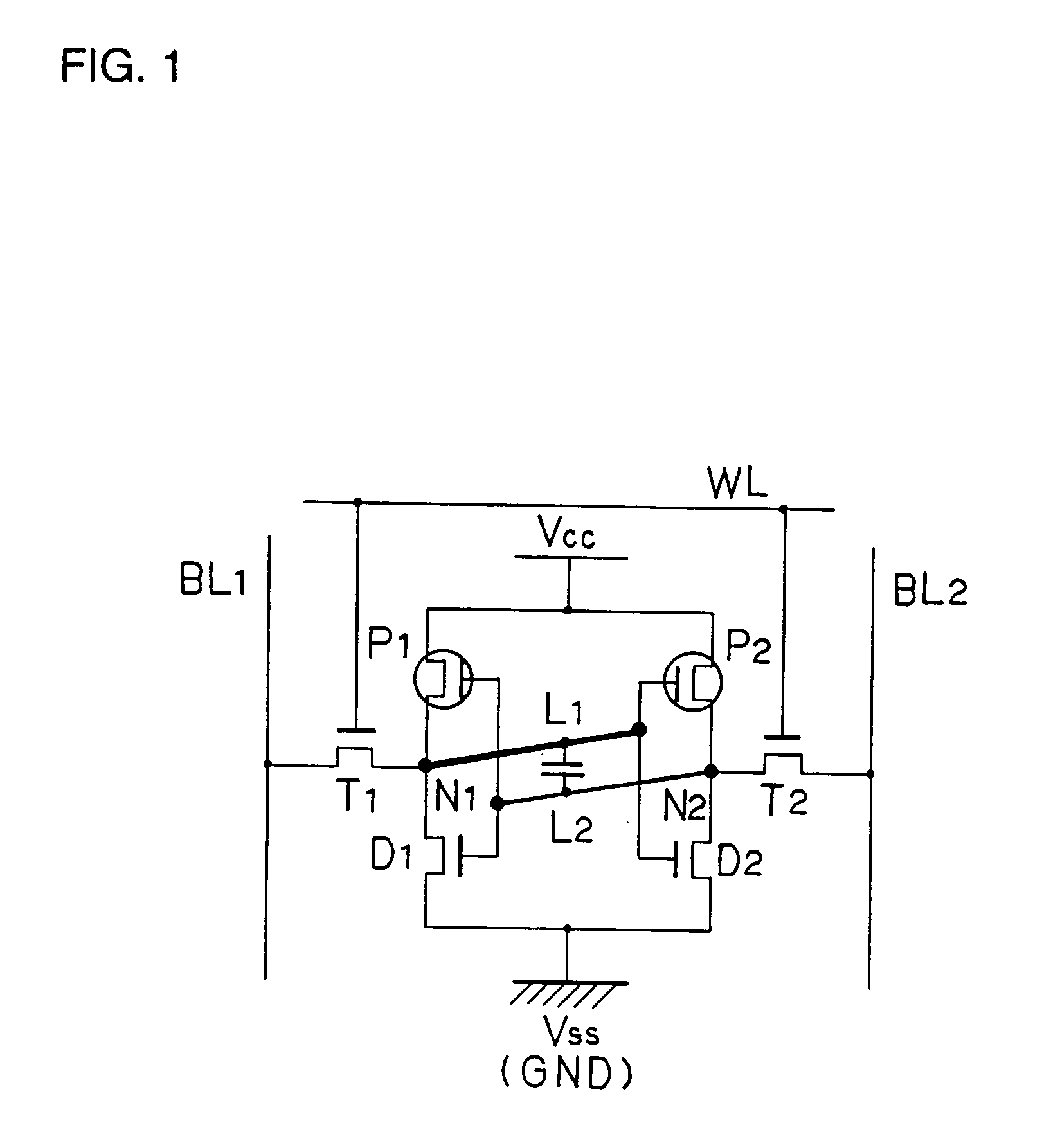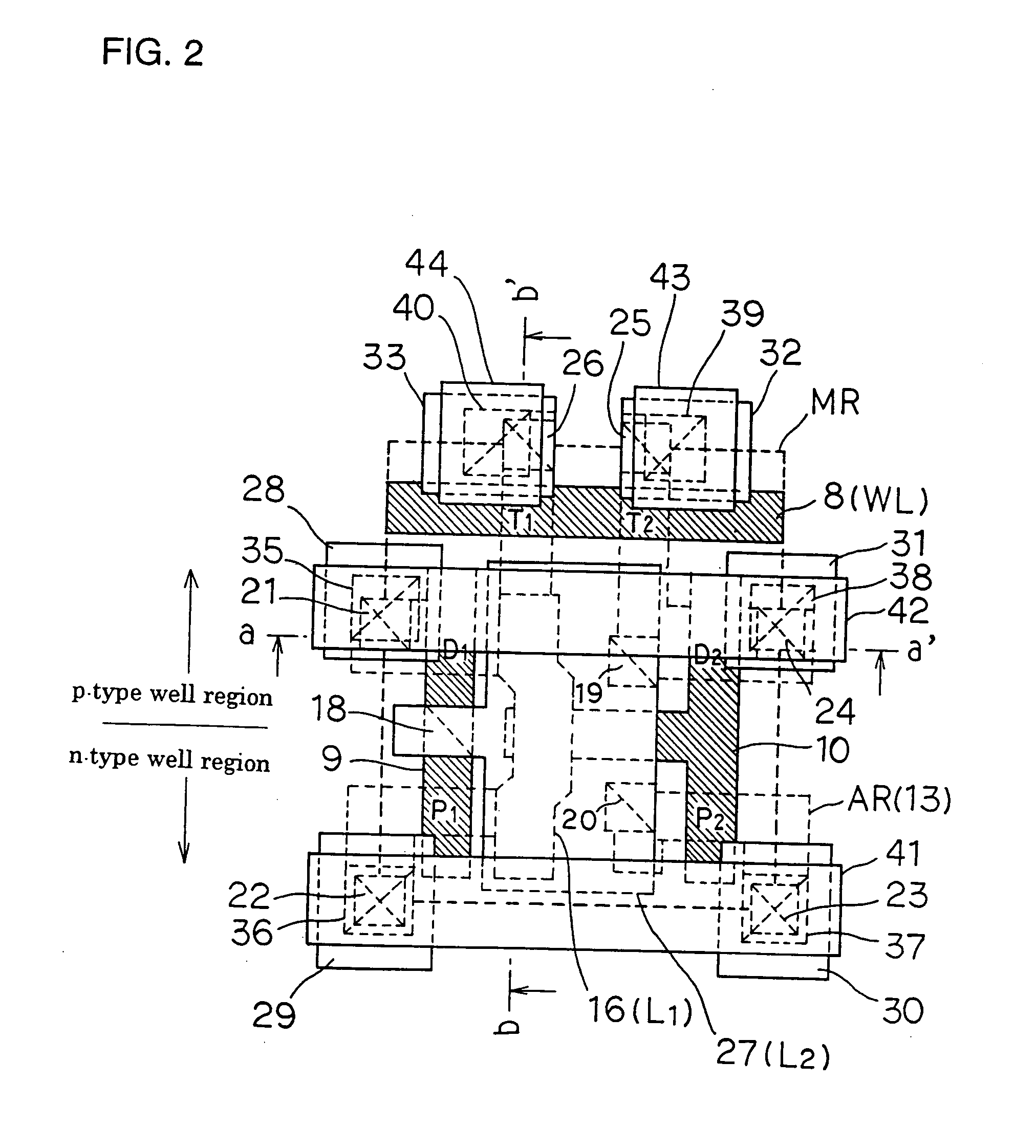Semiconductor memory device and manufacturing method thereof
a memory device and semiconductor technology, applied in the direction of semiconductor devices, electrical devices, transistors, etc., can solve the problems of large number of steps in the manufacturing method, insufficient reduction of cell size attained, and large cell area tend to become considerably large, so as to improve the -ray soft error resistance of the sram and facilitate the reduction of memory cell size
- Summary
- Abstract
- Description
- Claims
- Application Information
AI Technical Summary
Benefits of technology
Problems solved by technology
Method used
Image
Examples
first and second embodiments
[0142] Next, First and Second Embodiments of the present invention are described below.
[0143] In the First Embodiment, a pair of local interconnections L1 and L2 are disposed in two different layers, with the local interconnection in a lower layer being formed of an inlaid (damascene) interconnection and the local interconnection in an upper layer, formed of a conductive film in the form of a plate. Further, the disposition of these local interconnection is arranged in such a way that, seen from the top surface (the top surface plane) of the substrate, a portion of the upper layer local interconnection (the plate-shaped interconnection) overlaps at least a portion of the top surface of the lower layer local interconnection (the inlaid interconnection), with an insulating film lying therebetween. Herein, the lower layer local interconnection (the inlaid interconnection) and the upper layer local interconnection (the plate-shaped interconnection), separated by an insulating film, con...
third embodiment
[0185] A cross-sectional view showing a structure of the present embodiment is presented in FIG. 23. FIGS. 23 (a) and (b) corresponds to FIGS. 3(a) and (b) showing a structure of the First Embodiment, respectively.
[0186] In the structure of the present embodiment, a stacked electrode 101 is disposed on a lower layer local interconnection 16 (L1) that is an inlaid interconnection. A plate-shaped upper layer local interconnection 27 (L2) is disposed so as to cover, at least, a portion of the top surface as well as a portion of the lateral face of this stacked electrode 101 with an insulating film 17 lying therebetween. Although, in the drawing, the top surface and the lateral face of the stacked electrode 101 are partially covered, both of the faces can be entirely covered, as far as the margin permits. In such a structure, a capacitor element is formed also on the lateral face of the stacked electrode so that the capacitance of the element can be significantly raised.
[0187] The str...
fourth embodiment
[0189] A cross-sectional view showing a structure of the present embodiment is presented in FIG. 27. FIGS. 27 (a) and (b) corresponds to FIGS. 3(a) and (b) showing a structure of the First Embodiment, respectively.
[0190] In the structure of the present embodiment, a trench is set in a third interlayer insulating film 34 which is set, prior to an application of a second interlayer insulating film 17 that is to serve as a capacitor insulating film, and in this trench, there is formed a capacitor element composed of a cylinder electrode (an electrode film in trench, taking the shape of a hollow prism) 111 which covers the inside sidewall of the trench and besides the bottom of which comes into contact with the lower layer local interconnection 16 (L1) and a buried electrode 112 which fills up the trench after a second interlayer insulating film 17 is applied thereto, and the second interlayer insulating film 17 placed therebetween. In such a structure, a capacitor element is formed al...
PUM
 Login to View More
Login to View More Abstract
Description
Claims
Application Information
 Login to View More
Login to View More - R&D
- Intellectual Property
- Life Sciences
- Materials
- Tech Scout
- Unparalleled Data Quality
- Higher Quality Content
- 60% Fewer Hallucinations
Browse by: Latest US Patents, China's latest patents, Technical Efficacy Thesaurus, Application Domain, Technology Topic, Popular Technical Reports.
© 2025 PatSnap. All rights reserved.Legal|Privacy policy|Modern Slavery Act Transparency Statement|Sitemap|About US| Contact US: help@patsnap.com



